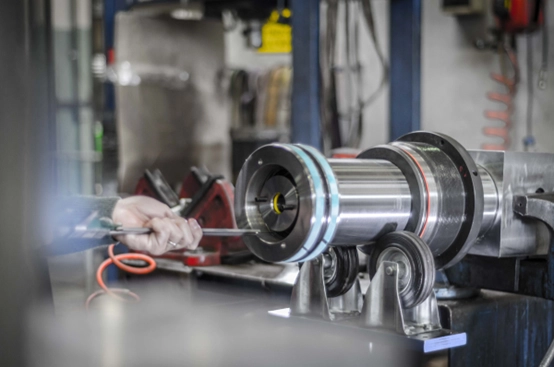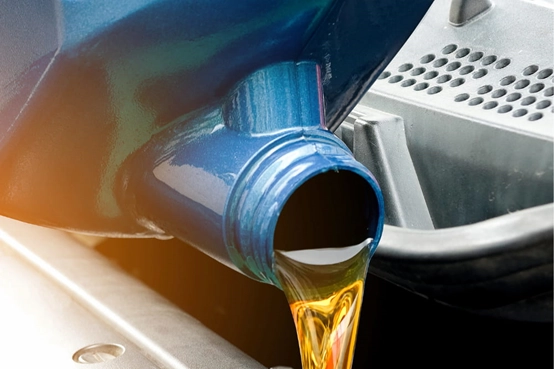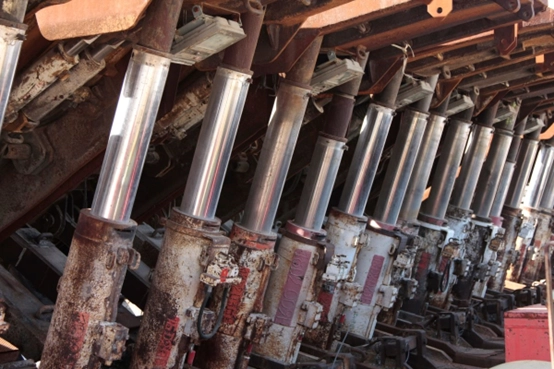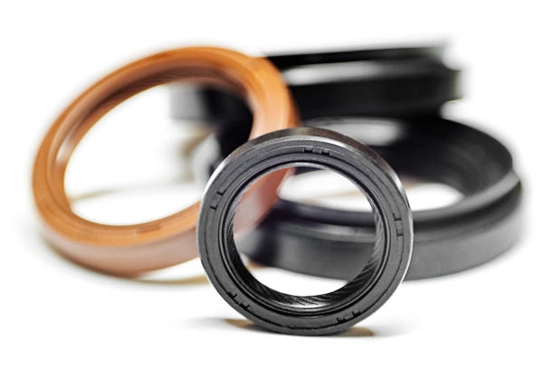News
What to do if the hydraulic system of the excavator leaks
The hydraulic transmission system has the advantages of small size, light weight, high specific power, stable operation, and stepless speed regulation, and is widely used in various cranes. However, the transmission efficiency of the hydraulic transmission system is lower than that of other transmission systems, and it is easy to fail, and the analysis and elimination of the failure is relatively difficult.

1.Classification of leaks
There are two main types of leakage in the hydraulic system of construction machinery: leakage at fixed seals and leakage at dynamic seals. Leakage at fixed seals mainly includes the cylinder bottom, various pipe joints, etc., and leakage at dynamic seals mainly includes cylinder piston rod, multi-way valve stem, etc. Oil leakage can be divided into external leakage and internal leakage. External leakage mainly refers to the leakage of hydraulic oil from the system into the environment, and internal leakage refers to the pressure difference between the high and low pressure sides and seal failure.

2.Influence reasons
(1) Seal selection
The reliability of the hydraulic system, to a large extent, depends on the design of the hydraulic system seal and the choice of seals, due to the design of the sealing structure selection is unreasonable, the choice of seals is not in line with the norms, in the design does not take into account the hydraulic oil and sealing material compatibility type, load conditions, limit pressure, working speed size, ambient temperature changes, and so on. These are in different degrees directly or indirectly cause the hydraulic system leakage. In addition, due to the use of construction machinery in the environment with dust and impurities, so in the design to choose the appropriate dust seal, to avoid dust and other dirt into the system to destroy the seal, contamination of the fluid, thereby generating leaks.
(2) Other design reasons
The geometrical accuracy and roughness of the moving surfaces are not considered comprehensively enough in the design as well as the strength calibration of the connecting parts are not carried out in the design, etc., which can cause leakage in the operation of the machinery.
3.Manufacturing and Assembly Factors
(1) Manufacturing factors
All hydraulic components and sealing parts have strict requirements on dimensional tolerance, surface treatment, surface finish and geometric tolerance. If the tolerance is exceeded during the manufacturing process, such as the piston radius of the oil cylinder, the depth or width of the sealing groove, the hole size of the sealing ring, or the roundness is out of tolerance due to processing problems, burrs or pits, chrome plating falling off, etc., the seal will be deformed, scratched, crushed or not pressed tightly, and lose its sealing function.

(2) Assembly factors
Hydraulic components should not be subjected to rough operation during assembly. Excessive force will cause deformation of the parts, especially when the cylinder body, sealing flange, etc. are hit with a copper rod. The parts should be carefully checked before assembly. When assembling, the parts should be dipped in a little hydraulic oil and gently pressed in. Diesels should be used for cleaning, especially for rubber components such as sealing rings, dust seals, and O-rings. If gasoline is used, they will age easily and lose their original elasticity, thus losing their sealing function.

4. Oil contamination and component damage
(1) Gas pollution
Under atmospheric pressure, about 10% of air can be dissolved in hydraulic oil. Under high pressure in the hydraulic system, more air or gas will be dissolved in the oil. Air forms bubbles in the oil. If the pressure of the hydraulic support changes rapidly between high and low pressures in a very short period during operation, the bubbles will generate high temperature on the high-pressure side and burst on the low-pressure side. If there are pits and damage to the components of the hydraulic system, the hydraulic oil will rush to the surface of the components at high speed, accelerating the wear of the surface and causing leakage.

(2) Particle contamination
Hydraulic cylinders are the main actuators of hydraulic systems of some construction machinery. During operation, the piston rod is exposed to the outside and directly contacts the environment. Although dust rings and seals are installed on the guide sleeve, it is inevitable that dust and dirt will be brought into the hydraulic system, accelerating the scratches and wear of seals and piston rods, thus causing leakage. Particle contamination is one of the fastest factors that damage hydraulic components.

(3) Parts damage
The seals are made of materials such as oil-resistant rubber. Aging, cracking, and damage due to long-term use will cause system leakage. If the parts are damaged by collision during operation, the sealing elements will be scratched, causing leakage.

